Sir Henry Morgan. The most famous corsair of Jamaica and the West Indies
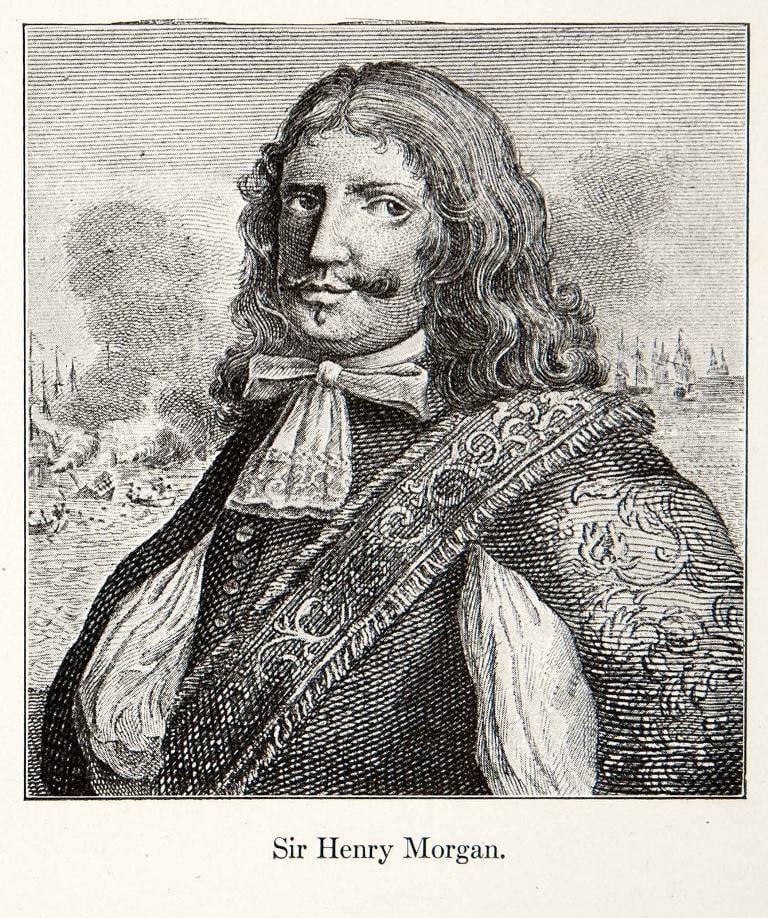
Origin of Henry Morgan
The English surgeon Richard Brown, who met our hero in Jamaica, reports that he ended up in the West Indies (on the island of Barbados) in 1658 or in 1659. At the same time, we know that at the end of 1671, Mr. Morgan (by his own admission) was "thirty-six years or so." Consequently, at the beginning of the Caribbean adventures he was 23 or 24 of the year.
Morgan claimed to be the "son of a gentleman." Moreover, Frank Kundall in his book “Governors of Jamaica in the 17th century” reports that Morgan allegedly often said that he was the eldest son of Robert Morgan from Llanrimni in Glamorganshire. This author suggested that Henry Morgan was the grandson of Sir John Morgan, who in documents of those years is referred to as “the other of the Morgan, who lives near Rumni in Magen and has a beautiful house.”
Other researchers disagree with Candell. Llewelyn Williams believed that the famous corsair was the son of Thomas Morgan, a Yeomen from Penkarn. And Bernard Burke, who in 1884 released The Universal Stamp of England, Scotland, Ireland, and Wales, suggested that Henry Morgan was the son of Lewis Morgan from Llangattock.
Alexander Ekskvemelin, a contemporary and subordinate of Morgan, in the book "Pirates of America" reports the following about the youth of this corsair and privatir:
That is, the payment “for travel” has become the usual three-year bonded contract in the West Indies, the terms of which put “temporary recruited” slaves.
This fact is confirmed by an entry in the Bristol archive from 9 (19) on February 1656:
Morgan himself denied this fact, but it is unlikely that his words in this case can be trusted.
Henry Morgan in Port Royal. The beginning of the career of a privat
For adventurers of all stripes, Barbados was a place quite suitable. The skipper of the English ship "Swiftshur" Henry Whistler wrote in his diary that this island
But Port Royal was a much more promising place for a young man about to start a filibuster career. And in the middle of the 60 of the XVII century we see Morgan in this city, moreover, a man already known and authoritative among the pirates and privatists of the island of Jamaica. It is known that in 1665 he was one of the captains of the squadron, who plundered the cities of Trujillo and Grand Granada in Central America. Somehow, Morgan earned the trust of the famous corsair Edward Mansfelt (which was described in the article Privatirs and corsairs of the island of Jamaica), after the death of which at the general meeting of crews of pirate ships based in Port Royal, he was elected the new “admiral” - at the end of 1667 or at the beginning of 1668 of the year.
The first campaign of the "admiral" Morgan
Soon, the Jamaican squadron (from 10 ships) for the first time went to sea under the leadership of Henry Morgan. At the same time, the Olone squadron attacked the coast of Central America (this expedition is described in the article The Golden Age of Tortuga Island).
February 8, 1668 off the coast of Cuba to flotilla Morgan was joined by two ships from Tortuga. At a general council, it was decided to attack the Cuban city of Puerto Principe (now Camaguey). On March 27, pirates landed and, after breaking up a Spanish detachment sent against them in a four-hour battle (about a hundred Spanish soldiers were killed), began to storm the city. Chronists report that after Morgan threatened to burn the entire city, while killing all its inhabitants, including children, the townspeople surrendered - because “they well knew that the pirates would instantly fulfill their promises” (Exvemeline).
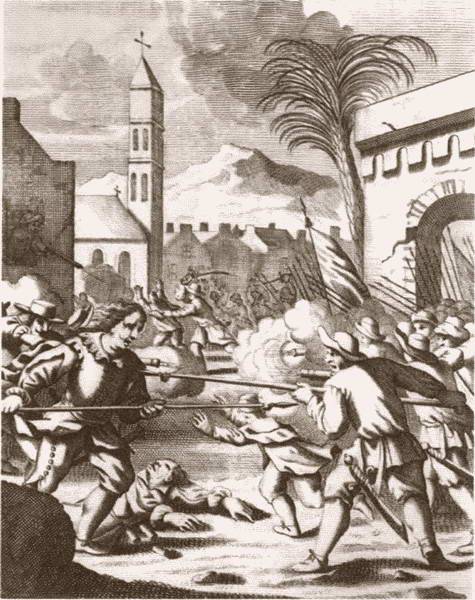
In addition to the ransom (50 thousand pesos), Morgan demanded from the townspeople 500 livestock, which was slaughtered, meat salted on the shore. During this work, a conflict broke out between the British and French due to the fact that the Englishman, who did not participate in the carcassing, took the bone from the Frenchman and sucked the brain out of it.
(Exememeline.)
As a result of this quarrel, the French left Morgan's squadron:
(Exememeline.)
The Cuban authorities were outraged by the "cowardice" of the inhabitants of the robbed city. The Governor of Santiago de Cuba, Don Pedro de Bayon Villanueva wrote to Madrid:
According to Alexander Exkemelin, after the departure of the French
Hike to Puerto Bello
The following year, he led the corsairs of Jamaica to the city of Puerto Bello (Costa Rica), which was called "the most significant of all the cities laid down by the Spanish king in the West Indies after Havana and Cartagena." In response to doubts expressed about the possibility of the success of this expedition, he said: "The fewer we are, the more will go to everyone."
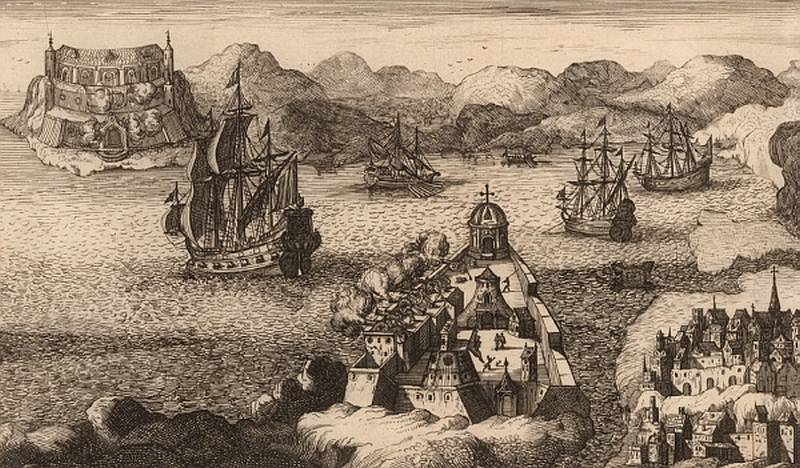
I think many have heard the saying that "a lion at the head of a herd of sheep is better than a ram at the head of a herd of lions." In fact, both the one and the other are bad, history gives us many examples of the falsity of this aphorism. The only thing that a hero who leads a crowd of cowardly philistines can do is die in a hopeless and futile attempt to fulfill his duty. The history of the corsairs of the Caribbean is replete with examples of this kind. The capture of Puerto Bello by the Morgan squad is one of them.
The assault on the city lasted from morning until lunch, and the pirates, even Morgan himself, were ready to retreat when an English flag was hoisted above one of the towers - this cowardice was expensive for the townspeople.
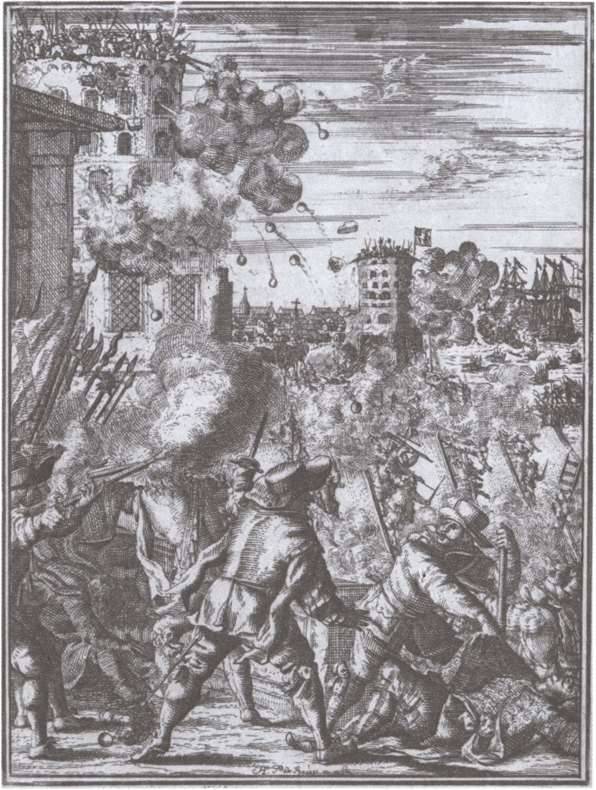
Only the governor, having closed with part of the soldiers in the fortress, continued his resistance. Morgan
"Never! Better to die like a brave soldier than to be hanged like a coward."
"The pirates decided to capture him, but they did not succeed, and the governor had to be killed."
(Exememeline.)
After the victory, Morgan seems to have lost control of the situation. According to the same Exvemelin,
However, the murdered governor was the last brave man in this city.
Having robbed the city, the pirates demanded a ransom from the townspeople, threatening to burn it to the ground in case of failure. At this time, the governor of Panama, having gathered about 1500 soldiers, tried to drive the corsairs out of the city, but his troops were ambushed and defeated in the first battle. Nevertheless, numerical superiority, as before, was on the side of the Spaniards, who, nevertheless, approached the walls of the city.
(Exememeline.)
In the captured city of filibusters, which at the beginning of the expedition there were only 460 people, there were 31 day. One of the pirate captains of that expedition, John Douglas (in other sources - Jean Dyugla), later said that if they had at least 800, they
The extraction of filibusters amounted to about 250 thousand pesos (piastres) in gold, silver and jewelry, in addition, a lot of canvas and silk, as well as other goods, were loaded onto the ships.
The joint campaign of filibusters Port Royal and Tortuga to Maracaibo
Returning to Jamaica, Morgan already in the autumn of 1668 sent an invitation to the Tortuga corsairs to take part in a new campaign on the Spanish possessions. The Allies met at the beginning of October at the island of Vash, the island of pirates' favorite (here their ships often stopped to divide production). Morgan had 10 ships, the number of crews of which reached 800 people, the governor of the island sent the Royal frigate "Oxford" who came from England to help them, the 2 ship came from Tortuga, including the frigate "Paper Kite" armed with 24 guns and 12 Cooler. Captain Pierre Picard, a member of the expeditions of the deceased Francois Olone, arrived with the French, who offered Morgan to repeat the campaign on Maracaibo. In March 1669, this city, and then - and San Antonio de Gibraltar were captured. But while the corsairs robbed Gibraltar, 3 of the Spanish warship and 1 auxiliary brig approached Maracaibo. The Spaniards also took possession of the fortress of La Barra, previously captured by the corsairs, again installing cannons on its walls. The maps below show how advantageous the position of the Spaniards was, and how desperate and disastrous it was at the Morgan squadron.
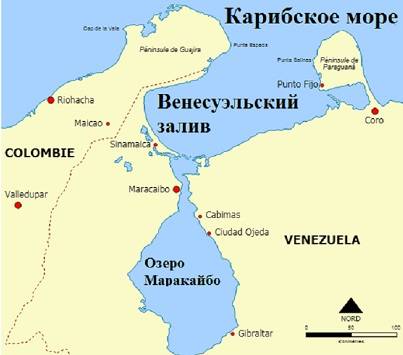
Morgan was offered surprisingly mild conditions for an unhindered exit from the lagoon: the return of the loot and the release of prisoners and slaves. No less surprising was the decision of the pirates, who in such a difficult situation at the military council unanimously decided that "it is better to fight to the last drop of blood than to give prey: for it they once risked their lives and are ready to do the same thing again."
Moreover, the pirates "took an oath to fight shoulder to shoulder to the last drop of blood, and if things turn out badly, then do not give the enemy mercy and fight to the last man."
It is difficult to say, why be more surprised in this case: the desperate courage of the filibusters or their pathological greed?
Morgan tried to bargain with the Spanish admiral, offering him the following conditions: the pirates leave Maracaibo unscathed, refuse to ransom both this city and Gibraltar, free all free citizens and half of the captured slaves, leaving themselves the other half and already looted property. Admiral did not accept this offer.
26 (according to other sources - 30) April, the squadron of filibusters made a breakthrough. Launched in front of the corsairs' firebrand rammed the Spanish flagship and detonated it. The remaining ships, fearing a repetition of such an attack, tried to retreat under the protection of the fort, while one of them ran aground, the other was boarded and set on fire. Only one Spanish ship managed to get out of the lagoon.
But the Morgan flotilla, despite the victory in the naval battle, could not yet go into the open sea, since the channel was fired by six cannons of the Spanish fort. The first attempt to storm the Spanish fortifications was unsuccessful. Nevertheless, Morgan did not lose optimism and still received a ransom from the inhabitants of Maracaibo in the amount of 20 000 pesos and 500 livestock. In addition, divers lifted silver ingots worth 15 thousand pesos and decorated with silver from the sunken Spanish flagship weapon. Here, contrary to custom, mining (250 000 pesos, as well as a variety of goods and slaves) was divided between the crews of different ships. The share of one corsair this time turned out to be about two times less than in the campaign to Puerto Bello. After this, a demonstration of preparations for an attack on the fort from land was carried out, because of which the Spaniards turned their guns away from the sea. Using their mistake, pirate ships in full sail jumped out of the “bottleneck” of the lagoon into the Gulf of Venezuela.
This story was retold by Rafael Sabatini in his novel Odyssey of Captain Blood.
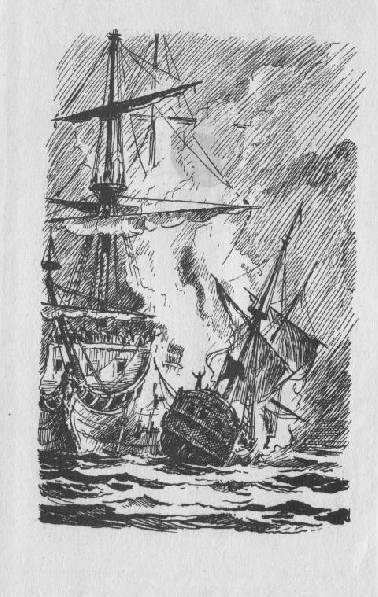
Immediately after this campaign, the Governor of Jamaica, Thomas Modiford, temporarily stopped issuing letters of marque by order of London. Corsairs interrupted trade in hides, lard, tortoise-shell and mahogany; some were forced, like the Buccaneers of Hispaniola and Tortuga, to hunt wild bulls and pigs in Cuba, two captains left for Tortuga. Morgan, who had previously invested the robbery capital in plantations in Jamaica with a total area of 6000 acres (one of which he named Llanrumni, the other Penkarn), was engaged in household affairs.
Hike to Panama
In June 1670, two Spanish ships attacked the northern coast of Jamaica. As a result, the Council of this island issued a privateer certificate to Henry Morgan, appointing him "admiral and commander in chief with all the powers to harm Spain and everything that belongs to the Spaniards."
Alexander Exvemelin reports that Morgan sent a letter to the governors of Tortuga d'Ogeron, planters and buccaneers of Tortuga and the Coast of Saint-Domengo inviting him to take part in his campaign. At that time, his authority on Tortug was already very high, so "the captains of the pirate ships immediately expressed a desire to go to sea and take on board as many people as their ships could accommodate." There were so many people who wanted to rob along with Morgan that some of them went to the general gathering place (south coast of Tortuga) by canoe, some on foot, where they replenished the crews of the English ships.
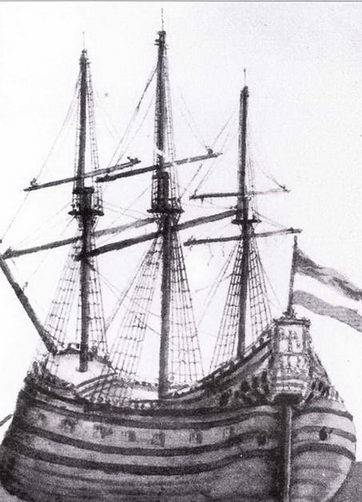
From Tortuga, this squadron went to Vash island, where several more ships joined it. As a result, under the command of Morgan, there was a whole fleet of 36 ships - 28 English and 8 French. According to Exvemelin, these ships were 2001 well-armed and experienced fighters. Morgan divided his fleet into two squadrons, appointing a vice admiral and rear admiral, after which it was decided at a general council that, “for the safety of Jamaica”, an attack on Panama should be carried out. Already notified that peace had been concluded in Madrid with Spain, the Governor of Jamaica, Thomas Modifird, did not cancel such a promising campaign. To avert suspicions of aiding the pirates, he informed London that he, the envoys, allegedly could not find your corsairs squadron that had already left the island.
In December 1670, the Morgan fleet approached the Spanish island of St. Catalina located opposite Nicaragua (now Isla de Providencia, or Old Providence, belongs to Colombia, not to be confused with the New Providence Bahamas).
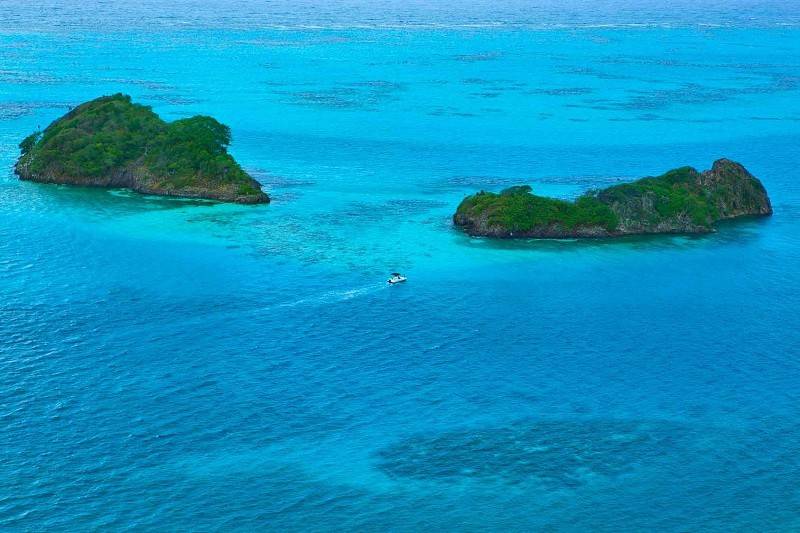
At that time, this island was used as a place for exile criminals and had a fairly strong garrison. The position of the Spaniards, who moved to a small island connected to the shore by a bridge (it is now called St. Catalina Island), was almost impregnable, in addition, the weather worsened sharply, it started to rain, and the corsairs began to experience food problems. As this has happened more than once (and will happen more than once), the Spanish governor's cowardice decided everything: he agreed to surrender, provided that the battle would be staged, during which he would supposedly be defeated and forced to surrender to the grace of the enemy. And so it happened: "from both sides they gaily fired from heavy cannons and shot from small ones, without doing any harm to each other." (Exvemeline).
The prey was not great - 60 blacks and 500 pounds, but the corsairs found guides here who were ready to lead them through the isthmus to the city of Panama, which, as you know, is located on the Pacific coast. One mestizo and several Indians became such.
The most convenient way to the Pacific Ocean was covered by Fort San Lorenzo de Chagres, located at the entrance to the mouth of the Chagres River. Morgan sent one of his squadrons here, with an order to take control of this fortress at all costs. The Spaniards, who had already heard rumors about the campaign of the corsairs (either to Panama, or to Cartagena), took measures to strengthen the garrison of this fort. Having got up in a small harbor about a mile from the main one, the corsairs tried to get around the fortress. Here they were helped by slaves captured on Santa Catalina, who cut through the thicket through the thicket. However, near the fortress the forest ended, as a result, the attackers suffered heavy losses from the Spanish fire, which, according to Exvemeline, shouted at the same time:
During the second assault, the corsairs managed to set fire to the houses of the fort, the roofs of which were covered with palm leaves.
Despite the fire, the Spaniards this time defended themselves fiercely when they ran out of ammunition, fought with peaks and stones. In this battle, the pirates lost 100 people killed and 60 wounded, but the goal was achieved, the path to Panama is open.
Only a week later the main forces of the Morgan flotilla approached the captured fortress, and, upon entering the harbor, a sudden gust of north wind threw the Admiral's ship and some other ships onto the shallows. Exvemelin speaks of three ships (besides the flagship), claiming that none of their crews were killed, William Fogg - about six, and calls the number of drowned - 10 people.
Leaving 400 in the fortress and 150 on ships, Morgan led the rest, who were stationed on small ships (from 5 to 7 according to various authors) and canoe (from 32 to 36) headed for Panama. Ahead was 70 miles of the hardest road. On the second day, at the village of Cruz de Juan Gallego, the pirates were forced to leave the ships, having allocated 200 people for their protection (the number of the Morgan shock detachment was now no more than 1150 people). Others went further - part of the detachment by canoe, part - on foot, along the coast. The Spaniards tried to organize several ambushes on their way, but they were abandoned by them at the first collision with the enemy. Morgan’s people suffered the most from hunger, so on the sixth day, faced with the Indians, some of the corsairs rushed after them, deciding that if they didn’t find anything to eat, they would eat one of them. But those managed to leave. That night in Morgan camp, conversations began to be heard about returning, but most of the corsairs were for continuing the campaign. In the village of Santa Cruz (where the Spanish garrison stood, who left without a fight), the pirates found only a dog (which was immediately eaten by them), a leather bag with bread and clay vessels with wine. Exememeline reports that “the pirates, having captured the wine, got drunk without any measure and nearly died, and they vomited everything that they ate on the way, with leaves and all other rubbish. “The reason was not familiar to them, and they thought they had added poison to the wine.”
Several groups of pirates were sent to search for food, but found nothing. Moreover, one group was captured, but Morgan hid it from the rest, so that the other corsairs would not completely lose heart. On the eighth day of the campaign, the road passed through a narrow gorge, from the slopes of which the Spaniards and Indians allied with them fired on corsairs from muskets and bows. Moreover, the Indians fought the most fiercely, who retreated only after the death of their leader. Having lost 8 people killed and 10 wounded, the pirates nevertheless escaped into the open. On the ninth day, they climbed the mountain (which has since been called the “Bukanyer Mountain”), from where, finally, they saw the Pacific Ocean and a small trading squadron coming from Panama to the islands of Tovago and Tavaguilla - “and then courage again filled the hearts of the pirates.” It seems that the Greeks of Xenophon experienced similar feelings when, after many days of travel, they saw the Black Sea ahead. The joy of the pirates increased even more, when, having gone downstairs, they found a large herd of cows in the valley, which were immediately slaughtered, fried and eaten. In the evening of that day, the corsairs saw the towers of Panama and rejoiced as if they had already won.
Meanwhile, Panama was one of the largest and richest cities in the New World. It had more than 2000 houses, many of which were decorated with paintings and statues brought by the owners from Spain. Also in the city there was a cathedral, a parish church, 7 monasteries and 1 women’s, a hospital, a Genoese courtyard in which Negroes were sold, and many stables for horses and mules used to transport silver and other colonial goods. On its outskirts there were 300 huts of Negro drivers. At that time there were about 700 cavalrymen and 2000 infantrymen in the Panama garrison. But for those who survived the incredibly difficult transition of Morgan's corsairs, this no longer mattered, and even a possible death in battle seemed to them better than a painful death from starvation.
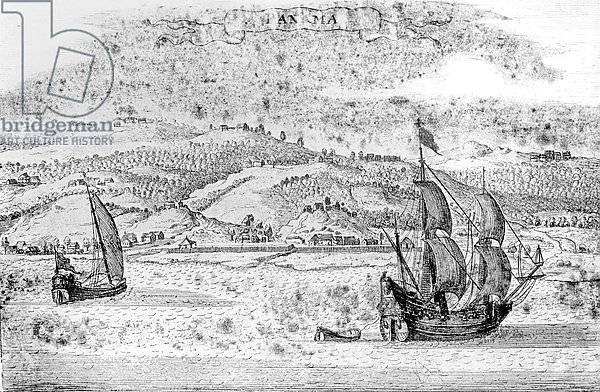
At dawn 28 January 1671 years came out of the camp - to the sound of drums and with banners unfurled. Through the forest and the hills of Toledo, they descended to the plain of Matasnillos and took a position on the slopes of the Forward Mountain. The Spaniards tried to give battle at the city walls. 400 cavalrymen who were unable to act effectively due to the marshland, 2000 infantry, 600 armed blacks, Indians and mulattos, and even two herds of 1000 bulls, whom 30 shepherd-vaqueros tried to send to the rear of the corsairs, were thrown into the attack. upset in their ranks. The pirates, having withstood the first onslaught of the enemy, counterattacked, taking him to flight.
Encouraged by the victory, the corsairs rushed to storm the city, whose streets were blocked by barricades protected by 32 bronze cannons. After 2 hours, Panama fell. The losses of the pirates were less than in the battle for the fort of San Lorenzo de Chagres: 20 people were killed and as many wounded, which indicates a rather weak resistance from the townspeople.
At the end of the assault
Meanwhile, a fire broke out in Panama. Alexander Ekskvemelin claims that the city was set on fire by the secret order of Morgan, which is illogical - after all, he came here to rob rich houses, and not to burn them. Spanish sources report that such an order was given by don Juan Perez de Guzmán, a knight of the Order of Santiago, “president, governor and captain-general of the Kingdom of Tierra Firms and Province of Veraguao,” who led the garrison of the city.
One way or another, Panama was burned; in burnt warehouses, bags of flour smoldered for another month. The filibusters were forced to leave the city; they entered it again when the fire died down. There was still something to profit from, the buildings of the Royal Audience and Accountancy, the governor's mansion, the monasteries of La Merced and San Jose, some houses on the outskirts, near 200 warehouses were not affected. Morgan stayed in Panama for three weeks - and the Spaniards had neither the strength nor the determination to try to drive his pretty thinned army out of the city. The prisoners said that "the governor wanted to assemble a large detachment, but everyone ran away and his plan was not realized due to the lack of people."
The Spaniards did not dare to attack even a small detachment of 15 people sent by Morgan with the news of the victory in San Lorenzo de Chagres.
Alexander Exvemelin reports:
Part of the pirates (about 100 people) set out on one of the captured ship to leave for Europe, but, having learned about these plans, Morgan “ordered to cut down the masts on this ship and burn them, the same thing should be done with the barges that were nearby”.
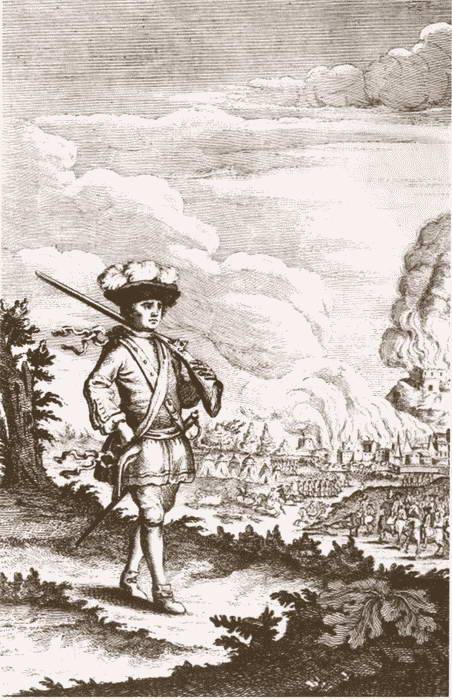
14 (24) On February 1671, a grand caravan of winners left Panama. The Soviet edition of the book by Alexander Exkemelin speaks of 157 mules loaded with broken and hammered silver and 50 or 60 hostages. In English translations, these numbers increase: 175 mules and 600 hostages.
Arriving at San Lorenzo de Chagres, Morgan discovered that most of the wounded left there died, the survivors suffered from hunger. The ransom for the fortress could not be obtained, so it was destroyed.
A production section was made, which many displeased with the small amounts that were ultimately paid to ordinary pirates (about 200 pesos or 10 pounds). Morgan himself estimated the extraction at 30 thousand pounds, but surgeon Richard Brown, who took part in that expedition, claims that only silver and jewelry cost 70 thousand - not counting the cost of the goods brought. Therefore, fearing the anger of his associates, Henry Morgan decided to leave them "in English" - without saying goodbye: on the Mayflower, he quietly went out into the open sea. He was accompanied only by three vessels - Pearl (captain Laurence Prince), Dolphin (John Morris - the one who fought with captain Champagne from Tortuga in 1666, see article The Golden Age of Tortuga Island) and Mary (Thomas Harrison).
Exvemeline reports:
This unexpected “flight” became the only spot on the reputation of Henry Morgan, who until then enjoyed great respect and authority among corsairs of the West Indies of all nationalities.
On May 31, the Council of Jamaica declared to Henry Morgan "thanks for the fulfillment of his last assignment."
The impression of Morgan's campaign was enormous - both in the West Indies and in Europe. The British ambassador wrote from Madrid to London that, with the news of the fall of Panama, the Queen of Spain "sobbed and rushed about in rage that those around her were afraid that this would shorten her life."
The Spanish Ambassador told King Charles II of England:
On the other hand, rumors reached Karl about the scandalous division of the booty obtained in Panama, and this already “hit the pocket” of the king himself - after all, Morgan did not pay him a “legal” tithe of the amount assigned to him.
Thomas Lynch, the chief of the colonial militia and personal foe of Governor Modford, who patronized Morgan, writes to Lord Arlington:
This was not entirely true: there were really enough offended, but the glory of the lucky corsair Morgan in the West Indies reached its zenith. The grand holiday he hosted in Port Royal on his return also contributed to Morgan's popularity in Jamaica.
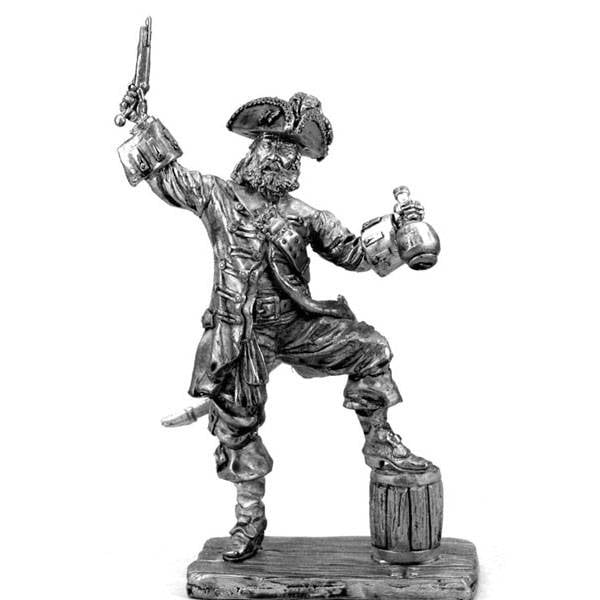
Henry Morgan and Thomas Modiford in London
The British authorities had to react. At first, the Governor of Jamaica Modiford went to London for explanations (sailed on 22 on August 1671). Then, on 4 of April 1672, Henry Morgan also went there on the frigate Velkom.
Modiford had to "sit" a little in the Tower, Morgan was forbidden for some time to leave the frigate. In the end, everything ended quite well, as the former governor found an influential relative - the young Duke Albemarl, the nephew of the Minister of the Colonies, and Morgan had money (after all, it was not for nothing that he escaped from his accomplices). Albertville achieved their release, and even brought them into the most fashionable salons in London. He did not need to exert much effort for this: among the London aristocrats just at that time there was a fashion for everything “overseas”. Monkeys and parrots were bought for a lot of money, and the absence of a Negro footman in the house was considered a terrible bad manners and could put an end to the reputation of any “secular lion”. And here is such a colorful couple from Jamaica: a former governor of an exotic island and a real sea dog, whose name was known far beyond the West Indies.
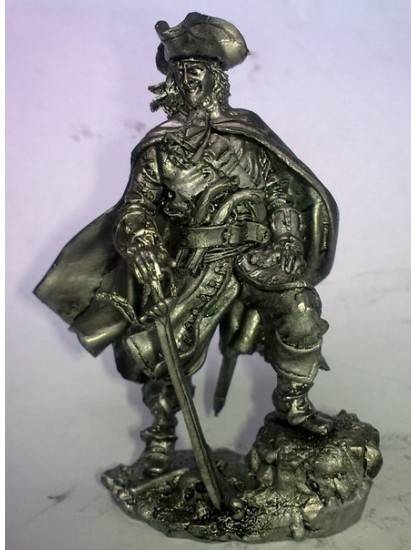
Modiford and Morgan were just like hot cakes, invitations to social events followed one after another.
In the end, both were justified. Moreover, from King Charles II, Morgan received a knighthood and the post of vice governor of Jamaica (they decided that “to curb the greed of the filibusters” there would be no better candidate than an authoritative admiral among them). Then Morgan got married. And in 1679, he also received the post of supreme judge of Jamaica.
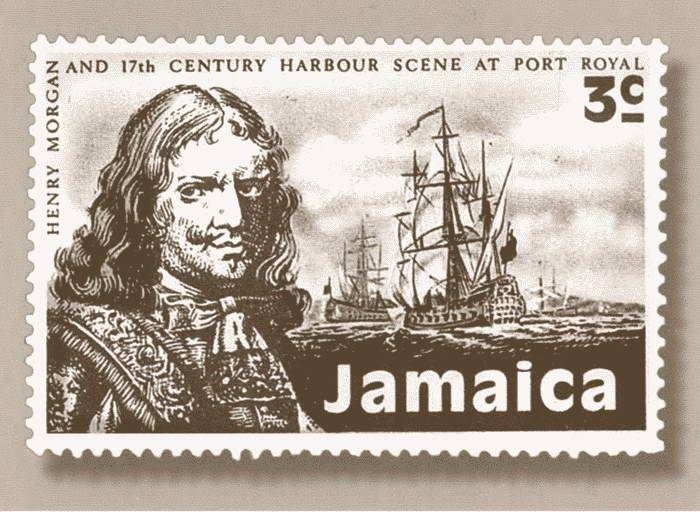
Morgan's career as vice-governor of Jamaica nearly ended before he began. His ship crashed near Vash Island, but the lucky adventurer was saved by his "colleague" - Captain Thomas Rogers, who at that time privatized according to the privateer certificate of Tortuga Island. Once in Jamaica, Morgan immediately did everything to return his friends to the "good old Port Royal". His boss, Lord Vaughan, wrote to London that Morgan
However, as they say in France, noblesse oblige (noble origin obliges): sometimes Morgan had to portray the severity and intransigence of the former "colleagues" - without prejudice to himself, of course. Thus, Morgan confiscated the ship from the captain Francis Mingham accused of smuggling, but he "forgot" to bring the proceeds from its sale into the treasury. In 1680, the Governor of Jamaica, Lord Carlisle, was recalled to London, and Morgan actually becomes the master of the island. In an effort to get the post of governor, he suddenly becomes an advocate of "law and order", and issues an unexpected order:
The ostentatious severity did not help, Henry Morgan's administrative career ended in the spring of the 1682, when he was dismissed, accused of abuse of power and embezzlement.
23 April 1685 the Catholic throne - James II, a supporter of peace with Spain, entered the English throne. And here, at a very wrong time, in England, two publishing houses published the book "Pirates of America" written by his former subordinate - Alexander Exvemelin. This work described in detail the anti-Spanish "exploits" of Morgan, who, moreover, was repeatedly called a pirate in it. And the venerable Sir Henry Morgan now claimed that he "was never a servant of anyone except his Majesty the King of England." And even more than that, at sea and on land, he proved to be "a man of the most virtuous aspirations, always opposing unrighteous acts, such as piracy and theft, for which he is deeply disgusted." One of the publishers agreed to release a “revised edition”, but the other, by the name of Malthus, did not want to follow the path of Morgan. As a result, the former privat and vice-governor began a lawsuit against him, demanding an incredible amount of 10 000 pounds as compensation for “moral damage”. Communication with "decent people" was not in vain: Morgan realized that, for a robbery, a musket and a saber are optional - a corrupt lawyer is also perfect. And why should he, such a well-mannered and respectable gentleman, be ashamed? Let him pay, "land rat," if he does not understand the "concepts".
The English court fined Malthus 10 pounds, and reduced the compensation for non-pecuniary damage to 200.
This was the first lawsuit against a book publisher in world history. And, since the basis of the English legal system is “case law”, many generations of British lawyers were puzzled afterwards, trying to understand the true and hidden meaning of the famous phrase from the court order 1685:
When he was out of work, Morgan was actively abusing alcohol, and probably died of cirrhosis in the 1688 year. Shortly before his death, the Duke of Albertville, appointed governor of the island, arrived in Jamaica. It turned out that he had not forgotten his old friend: in order to provide moral support to the dying Morgan, Albertville had achieved his restoration in the Council of the island.
Henry Morgan was buried at Port Royal Cemetery. After 4 of the year, a terrible earthquake destroyed this city, the tsunami waves that followed it, among other trophies, took away the ashes of the famous corsair.
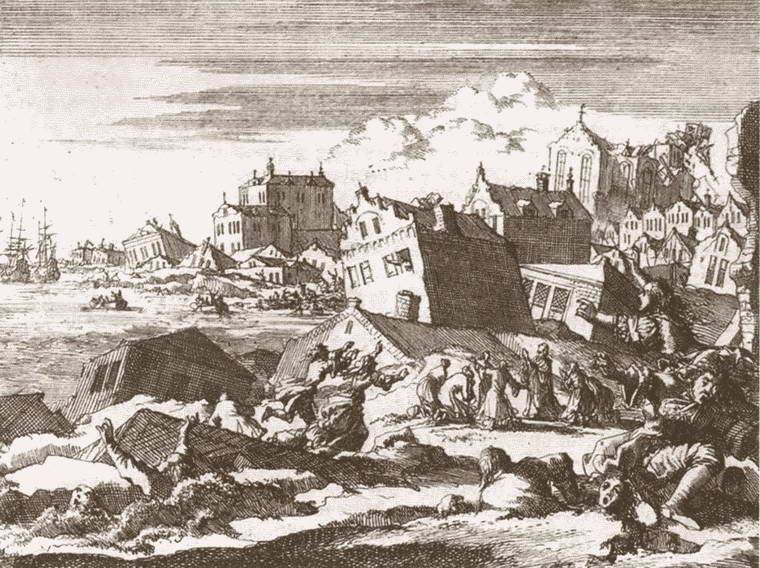
So, the very nature of the refuted line written after the death of Henry Morgan song:
There is no sea in the world
Where i have not been
Filibuster Welshman,
Morgan Admiral.
But he is eternal rest
Found only in the earth.
Contemporaries said that "the sea took away for itself what had long been due to it by right."
The completion of the story of the Tortuga and Port Royal filibusters will be described in the next article.
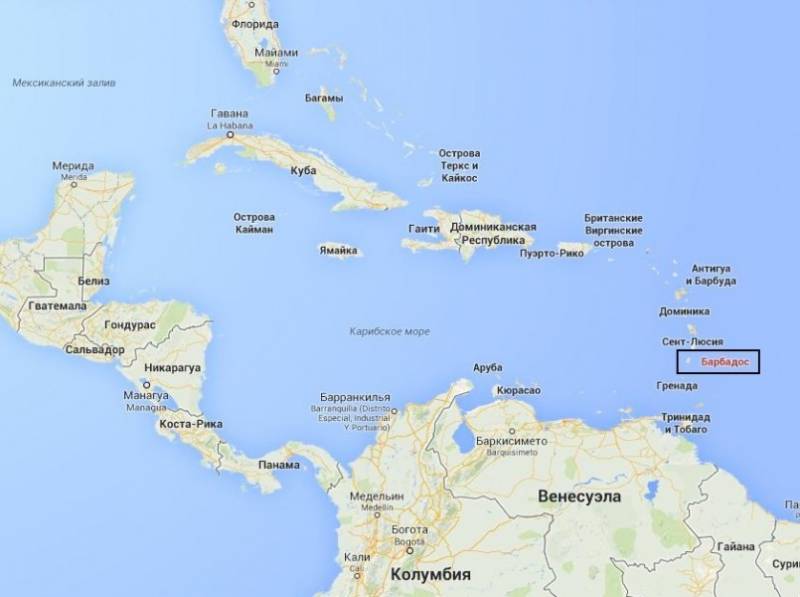
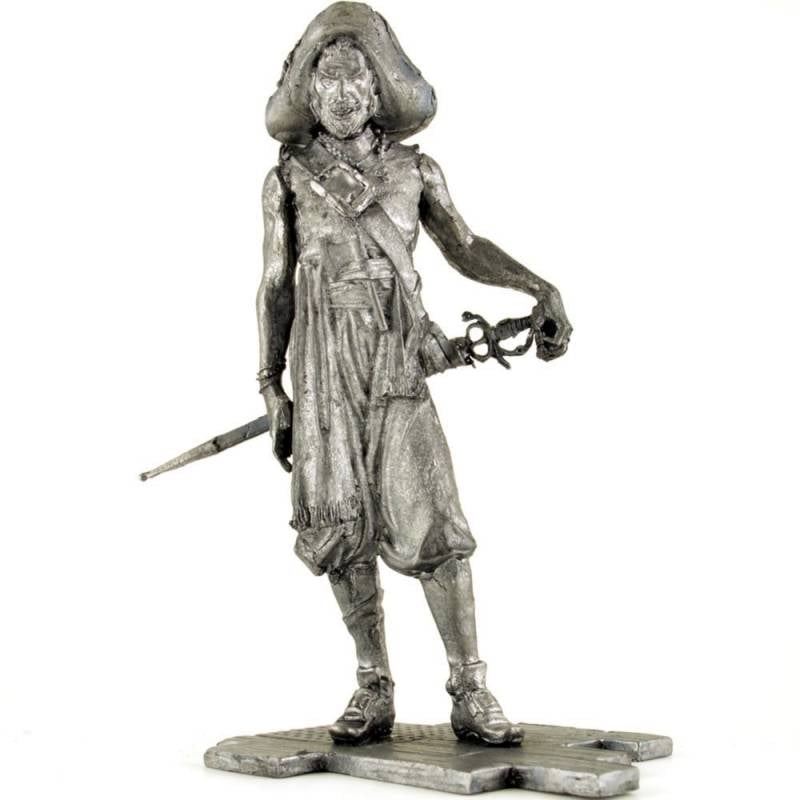
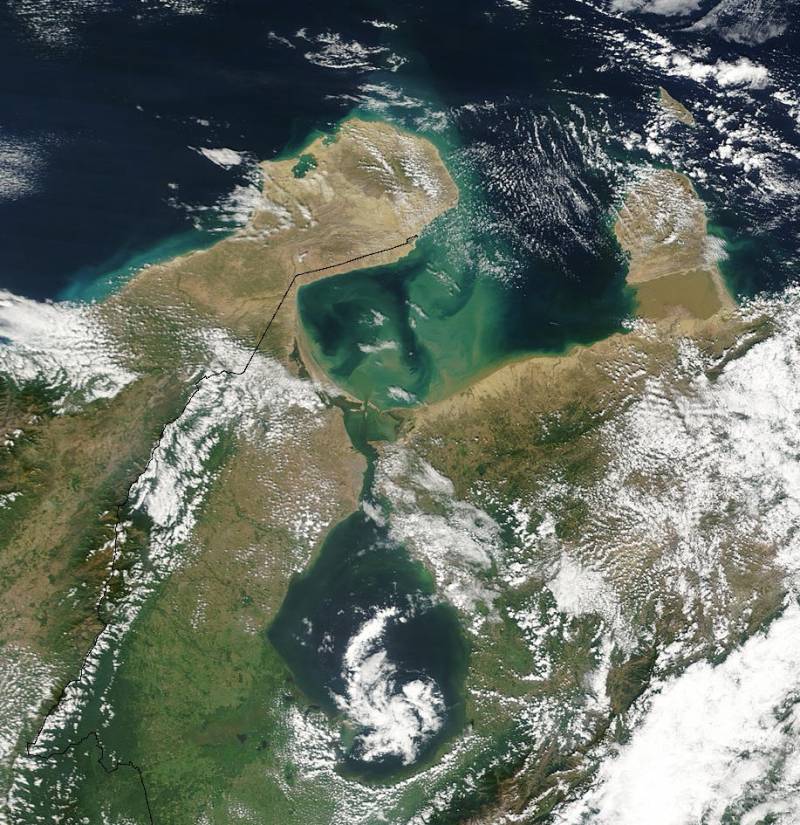
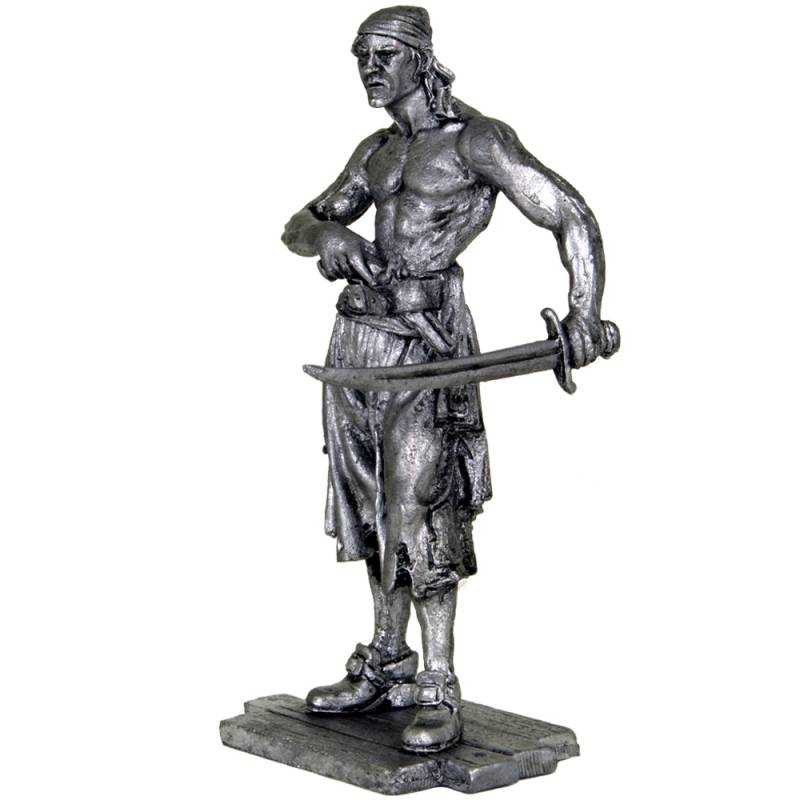
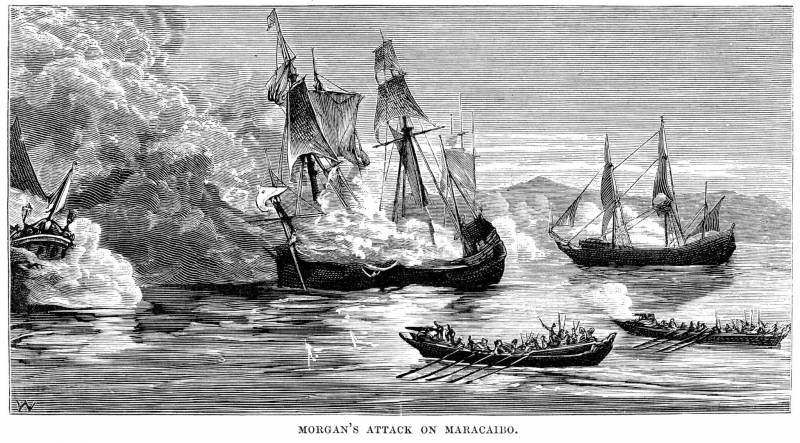
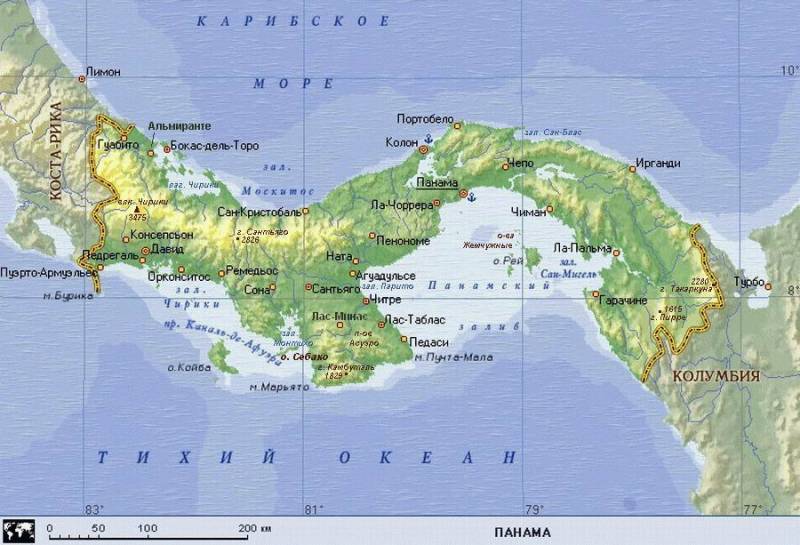
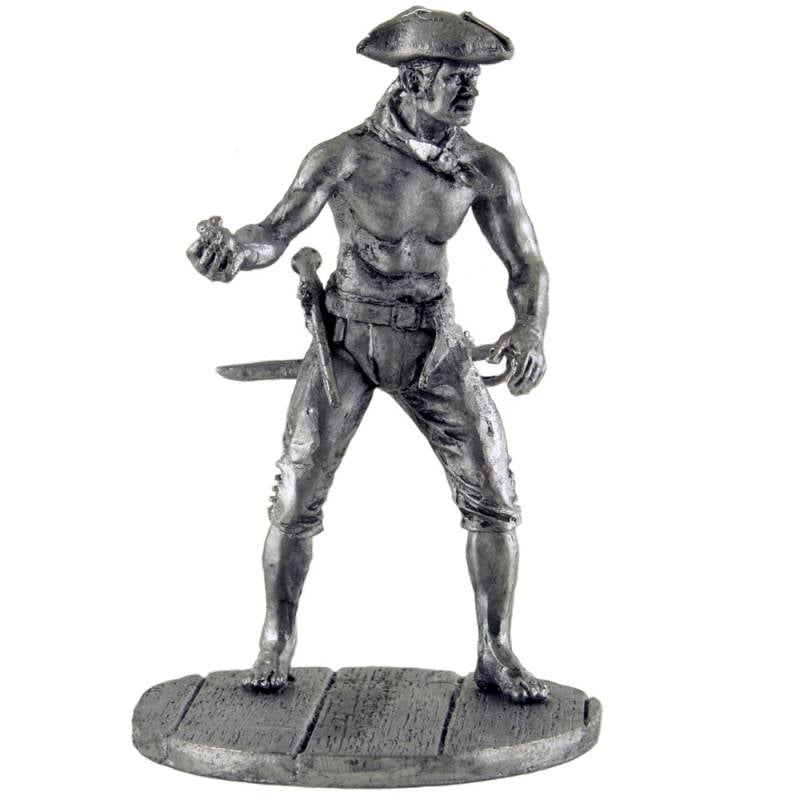
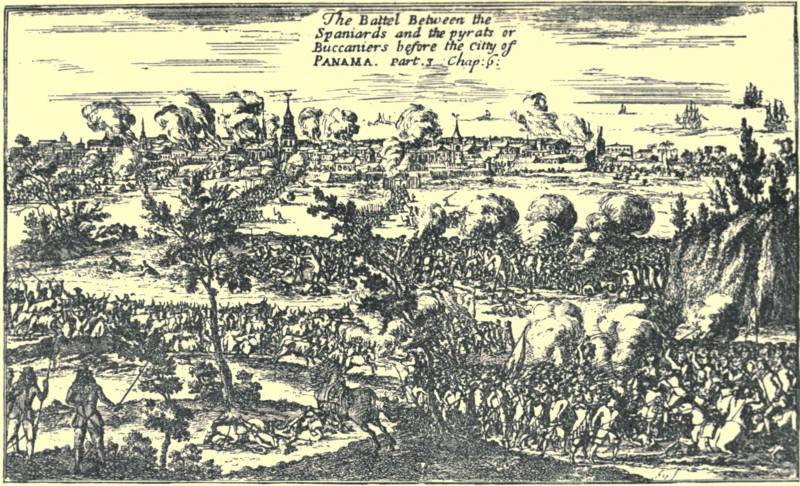
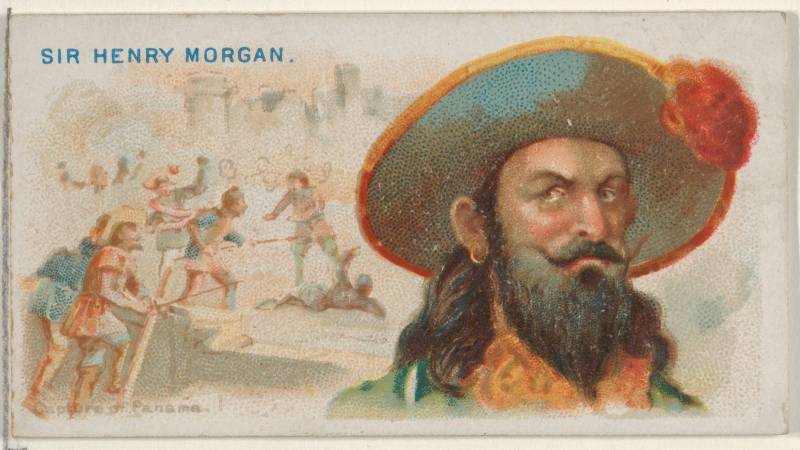
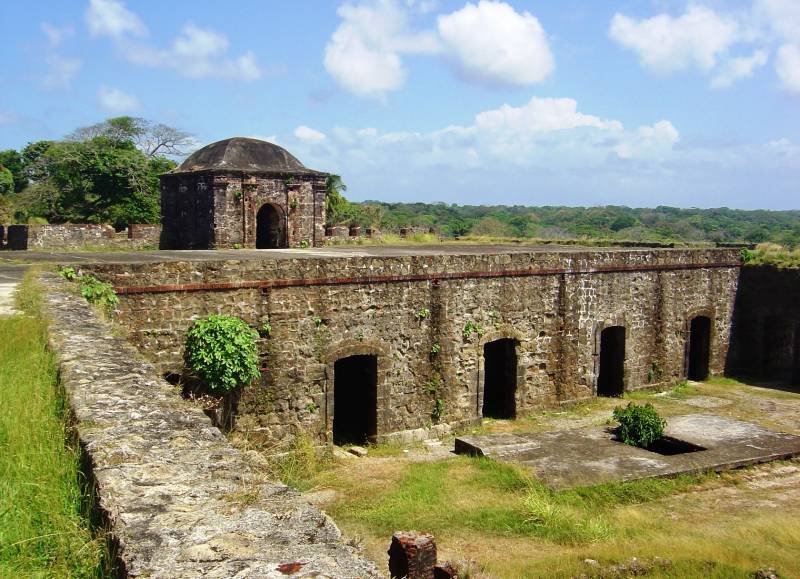
Information